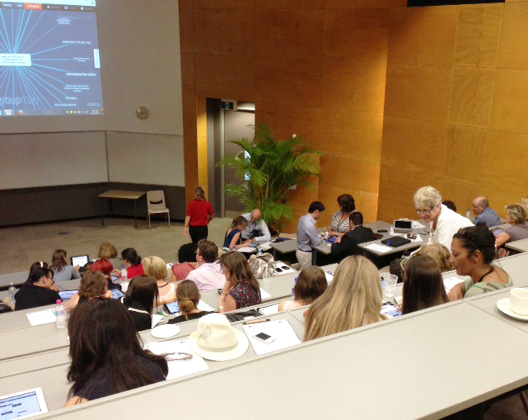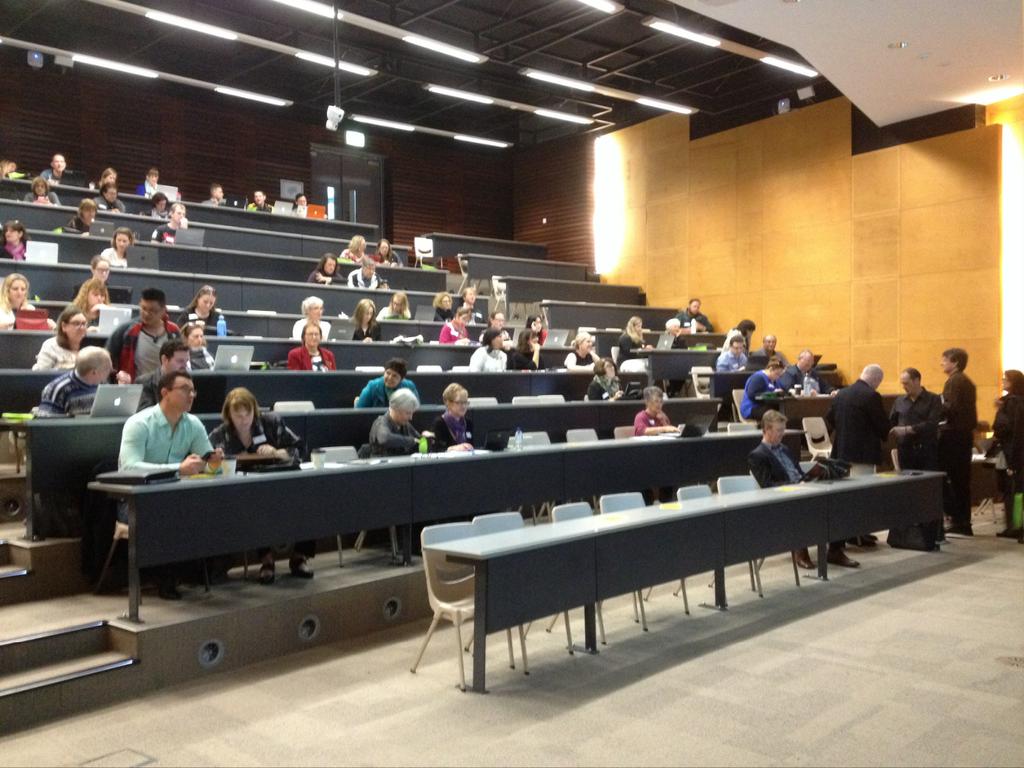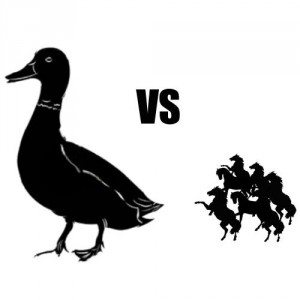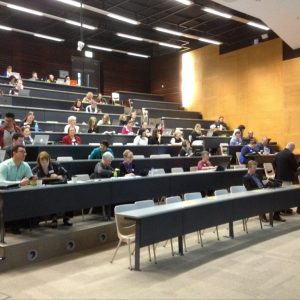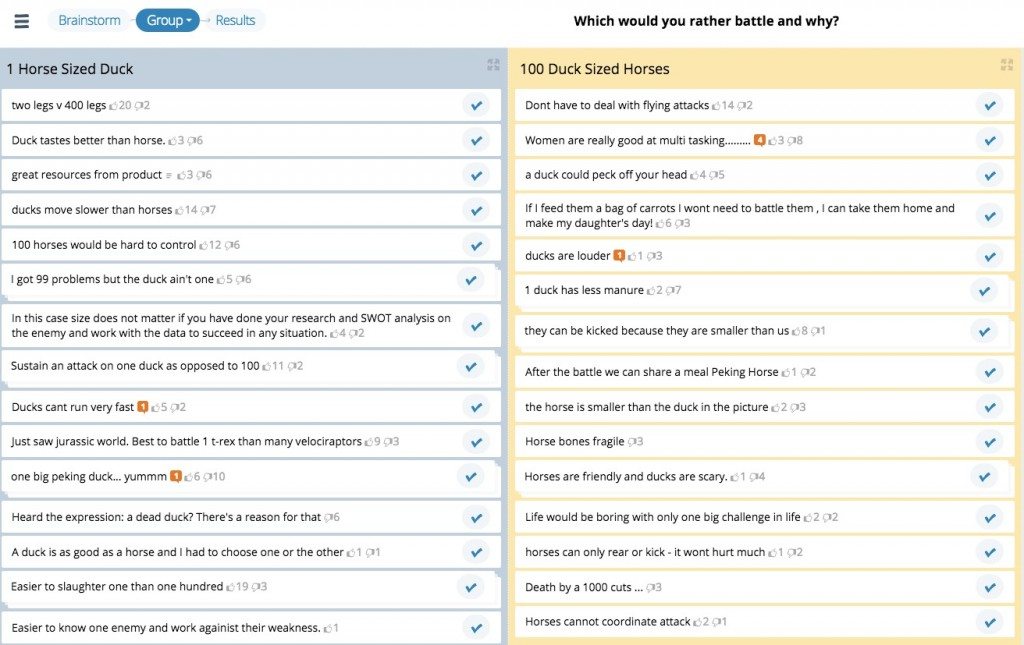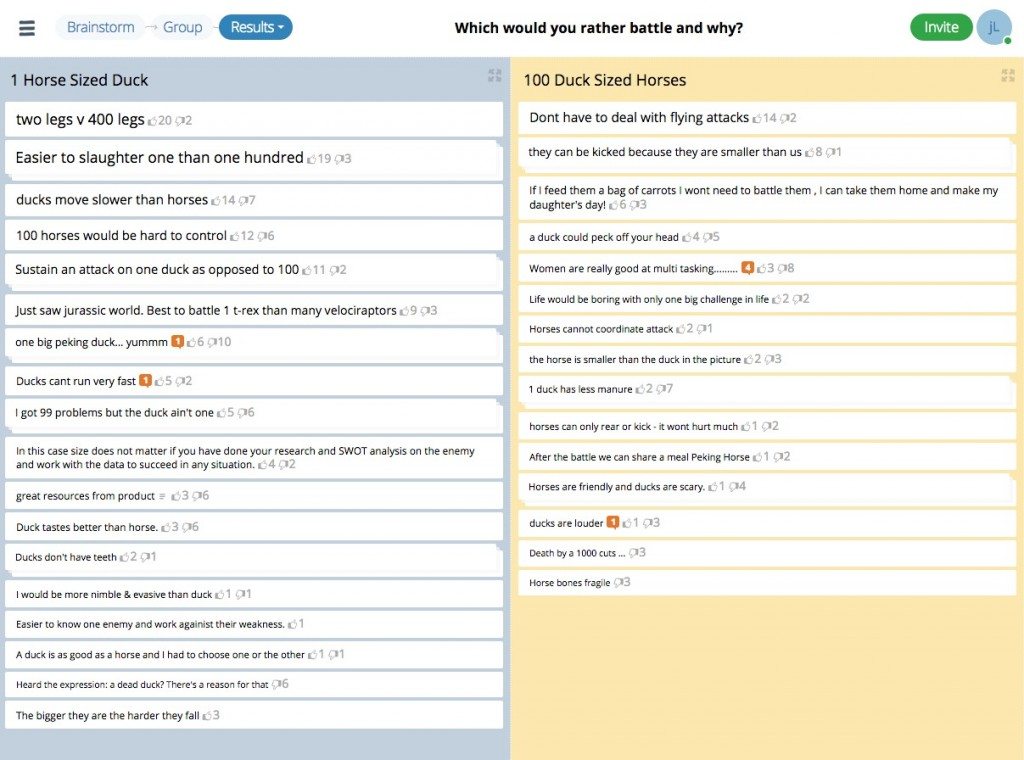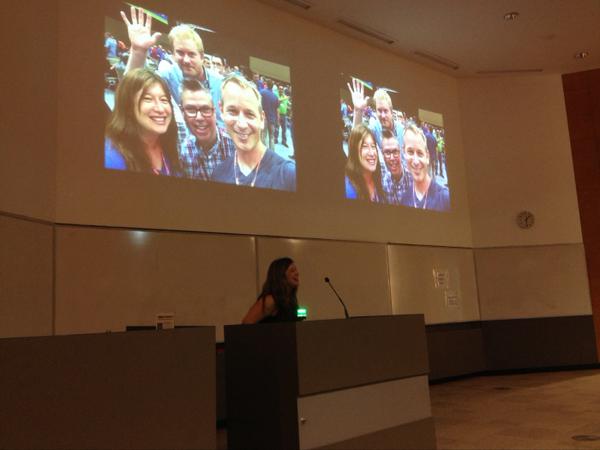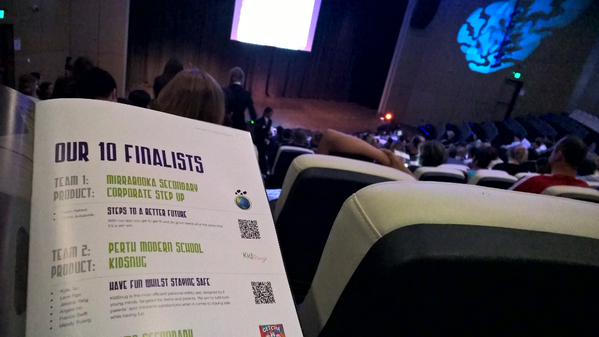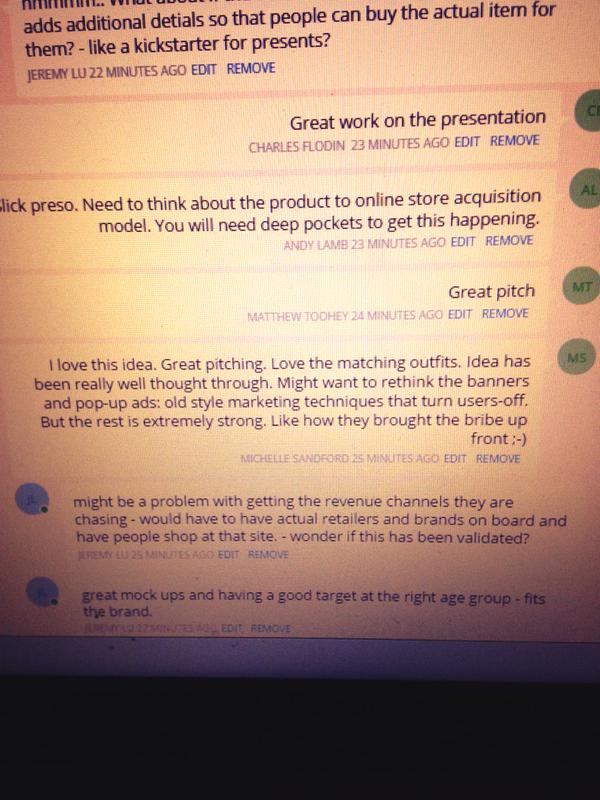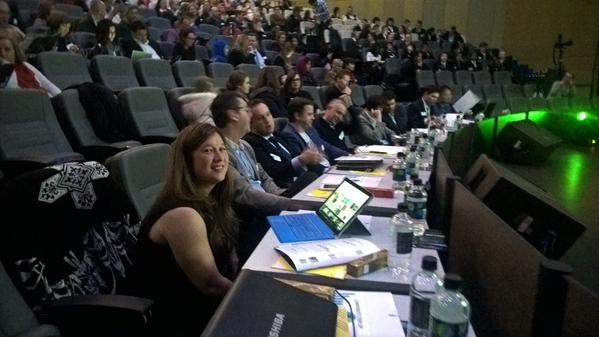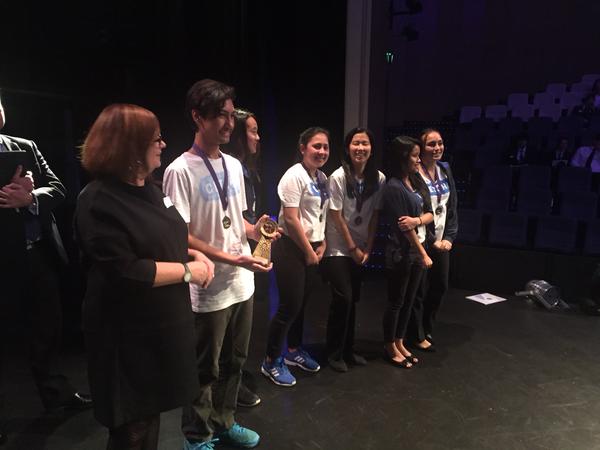There are audience response systems and then there are audience “engagement” systems. Sadly, not all problems can be addressed with multiple choice answers.
By moving beyond the simple polling for, the National Association of Graduate Career Advisory Services were able to tackle some big issues facing student work experience and future employment. Here’s how they did it Over 110 Career Professionals were surveyed using GroupMap to identify and rank key barriers for student employment. This was compared to the student responses taken from international and domestic students at Curtin University Careers Centre. This was used to address the gap between student and employer expectations. By using online brainstorming and idea ranking software, the conference group was first asked to write what they thought were the main barriers for work experience and employment. iPads were used to capture responses, visually in real time. Individual unique responses were shared and then aggregated in real time for decision making. The Top 10 issues were identified using a collaborative mind map which used audience consensus and input to indicate consensus. These issues were then ranked against 2 main criteria on a GroupMap 2D chart comprising of: 1.Urgency – How quickly must the problem be addressed due to its impact on employment and work; 2.Influence – How much direct influence can the professional group have in addressing the issue, either directly or through advocacy The top 2 issues were identified based on its ranked position (Highest urgency and highest level of influence). This was done in real time, using the audience’s response to determine the final rankings. Delegates were then divided into 2 groups and set to task brainstorming potential solutions using GroupMap. There were some obvious benefits in using audience response technology:
By moving beyond the simple polling for, the National Association of Graduate Career Advisory Services were able to tackle some big issues facing student work experience and future employment. Here’s how they did it Over 110 Career Professionals were surveyed using GroupMap to identify and rank key barriers for student employment. This was compared to the student responses taken from international and domestic students at Curtin University Careers Centre. This was used to address the gap between student and employer expectations. By using online brainstorming and idea ranking software, the conference group was first asked to write what they thought were the main barriers for work experience and employment. iPads were used to capture responses, visually in real time. Individual unique responses were shared and then aggregated in real time for decision making. The Top 10 issues were identified using a collaborative mind map which used audience consensus and input to indicate consensus. These issues were then ranked against 2 main criteria on a GroupMap 2D chart comprising of: 1.Urgency – How quickly must the problem be addressed due to its impact on employment and work; 2.Influence – How much direct influence can the professional group have in addressing the issue, either directly or through advocacy The top 2 issues were identified based on its ranked position (Highest urgency and highest level of influence). This was done in real time, using the audience’s response to determine the final rankings. Delegates were then divided into 2 groups and set to task brainstorming potential solutions using GroupMap. There were some obvious benefits in using audience response technology:
- Ideas were “real” and driven by the audience, not pre-made beforehand.
- Seeing ideas from peers in real time helped stimulate even more thinking
- Being able to brainstorm independently dramatically increased the number of ideas generated.
- The choice of maps allowed the group to move from ideation to prioritisation.
- Individuals could compare their own views to the person sitting next to them, as well as the group’s view.
- Visual ranking managed information overload
- Having a conversational map was an excellent tool for leading and focussing discussion on the top solutions on the day.
NAGCAS is Australia’s peak professional body for career development in the higher and tertiary education sectors. Results and findings, including a review of GroupMap can be seen in their 2013 March publication. GroupMap is an online group brainstorming and audience response tool that allows individuals to create and share unique responses which are then pulled together in real-time to show the group’s result.
